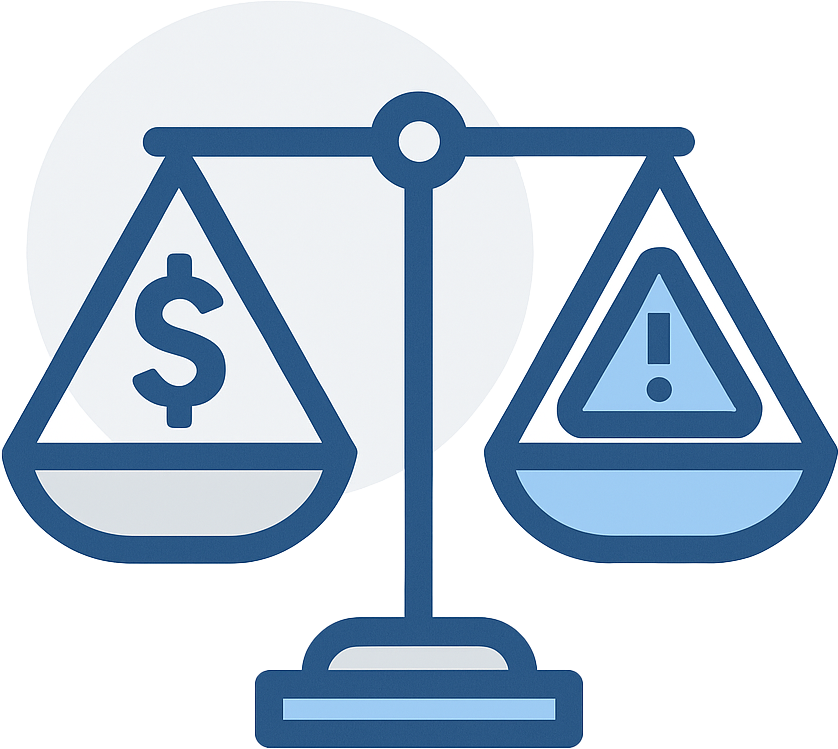Understanding the steps in environmental due diligence (and when each one applies)!
If you’re buying, selling, or financing commercial property, you’ve probably heard the terms Phase I ESA and Phase II ESA thrown around - usually somewhere between “we need it for closing” and “we don’t have time for that.”
They sound similar, but they serve very different purposes. And knowing the difference can save you thousands of dollars, prevent costly surprises after closing, and keep your transaction moving smoothly.
At RMA, we’ve performed hundreds of environmental assessments for property buyers, sellers, lenders, and attorneys - so we know how confusing the terminology can get. And just know that if you need a hand with a Phase I or Phase II, you can always reach out to us for help here.
Let’s break down exactly what each phase means, what they involve, and how to decide what’s really needed for your deal.
Table of Contents
The Role of Environmental Site Assessments in Real Estate
Before diving into the details, it helps to understand why environmental assessments exist in the first place.
Under federal law - specifically the Comprehensive Environmental Response, Compensation, and Liability Act (CERCLA), also known as the Superfund Law - property owners can be held liable for cleaning up contamination on their land (even if they didn’t cause it!).
That means if you buy a property that’s contaminated, you could inherit that liability. To protect buyers and lenders, the EPA established a process called “All Appropriate Inquiry” (AAI) - essentially a set of rules for environmental due diligence. If you perform due diligence according to AAI and ASTM standards, you may qualify for certain liability protections under CERCLA.
That process starts with a Phase I Environmental Site Assessment - and sometimes, depending on the findings, continues to a Phase II.

What Is a Phase I Environmental Site Assessment?
A Phase I ESA is a non-invasive investigation of a property’s history, use, and surrounding conditions to determine whether there are any “Recognized Environmental Conditions” - or RECs - that might indicate contamination.
Think of it as a "background check" for the property. The goal is to identify potential or known environmental issues that could affect value, liability, or future use.
A Phase I ESA typically includes four key components:
- Records Review
- Historical aerial photographs, Sanborn fire insurance maps, city directories, and topographic maps
- Federal and state environmental databases for spills, tanks, or contaminated sites nearby
- Past ownership and use history going back decades
- Site Inspection
- A visual walkthrough of the property and surrounding areas
- Observations of potential concerns like staining, odors, vent pipes, or fill material
- Identification of aboveground or underground storage tanks
- Interviews
- Conversations with current or former owners, occupants, or local officials to clarify past uses and activities
- Report and Evaluation
- A detailed report summarizing findings, identifying potential RECs, and providing professional conclusions
Importantly, a Phase I ESA is non-intrusive, it does not involve any sampling, drilling, or lab work. It’s essentially a document-based and observational process.
If the Phase I finds no RECs, you’re done - you’ve met your due diligence requirement and can move forward confidently. If it does identify RECs or “potential” contamination, that’s where a Phase II ESA comes in.
What Is a Phase II Environmental Site Assessment?
A Phase II ESA is a sampling and testing investigation that confirms whether contamination actually exists at the property - and, if so, to what extent. It’s a follow-up to a Phase I ESA, conducted only when there’s evidence or suspicion that hazardous substances or petroleum products may have been released into the environment.
In other words, the Phase II answers the question: “Is there really contamination here, and how bad is it?”
Depending on the property and suspected issues, a Phase II ESA may include:
- Soil sampling
- Groundwater sampling (via monitoring wells)
- Soil vapor sampling (for volatile compounds)
- Surface water or sediment sampling
- Laboratory analysis of samples for contaminants such as petroleum hydrocarbons, solvents, heavy metals, pesticides, or PCBs
The scope of a Phase II can range from a few samples near an old tank location to a full-scale subsurface investigation covering multiple areas of concern.
Once the data is analyzed, you’ll get a detailed report showing:
- Whether contamination is present
- What chemicals were detected and at what concentrations
- How those concentrations compare to regulatory standards
- And whether further investigation or cleanup (a Phase III, or remediation phase) is warranted

Key Differences Between Phase I and Phase II ESAs
Here’s a quick side-by-side comparison:
|
Aspect
|
Phase I ESA
|
Phase II ESA
|
|
Purpose
|
Identify potential contamination risks (RECs)
|
Confirm and quantify contamination
|
|
Methods
|
Historical research, visual inspection, interviews
|
Soil, groundwater, and vapor sampling and lab testing
|
|
Intrusiveness
|
Non-invasive
|
Invasive (drilling, sampling)
|
|
Regulatory Standard
|
ASTM E1527-21
|
ASTM E1903-19
|
|
When Performed
|
During standard due diligence
|
When RECs are identified in Phase I
|
|
Duration
|
Typically 2–3 weeks
|
3–6 weeks depending on scope
|
|
Cost Range
|
$4,000–$10,000
|
$5,000–$25,000+ (varies widely)
|
|
End Result
|
Determination of potential issues
|
Confirmation and quantification of issues
|
In simple terms: Phase I = identification. Phase II = verification.
Why Both Phase I and Phase II ESAs Matter in Transactions
For lenders, insurers, and investors, environmental due diligence is about risk management. A Phase I ESA helps you identify potential issues before you commit, and a Phase II helps you quantify the actual risk if something’s suspected.
Skipping either step can leave you exposed. We’ve seen buyers skip the Phase II to “save time”... only to discover contamination later that cost six figures to address. On the other hand, we’ve also seen unnecessary Phase II work performed when it wasn’t justified - wasting both time and money.
That’s why judgment and experience matter. At RMA, we take a risk-based approach:
- We never push Phase II work unless the data truly supports it.
- We communicate early and clearly about what we find in Phase I - and what it means for your deal.
- And when sampling is justified, we scope it carefully to target real risks, not create unnecessary expense.

What Happens If Contamination Is Found in a Phase II ESA?
Finding contamination doesn’t necessarily kill a deal - it just means you need to understand and manage the risk.
Depending on the results, that might involve:
- Additional sampling to define the extent of contamination
- Coordination with the state’s voluntary cleanup program
- Negotiating seller-funded remediation or escrow
- Or sometimes simply documenting the condition for future management
RMA helps clients navigate those next steps - working closely with attorneys, lenders, and regulators to keep transactions moving while protecting your interests.
How to Get Phase I or Phase II ESA Help
If you’re buying or financing commercial property, the Phase I ESA is almost always required. The Phase II ESA, on the other hand, is only performed when the Phase I indicates a reason to dig deeper. A well-executed Phase I should answer 90% of your questions. A targeted Phase II fills in the rest - confirming whether the property is truly clean or needs further action.
The key is working with an environmental consultant who understands the business side of environmental risk - someone who won’t just hand you a report, but will explain what it means in real-world terms. At RMA, we’ve built our reputation on helping clients do exactly that.
We combine decades of technical expertise with business insight to deliver environmental assessments that are accurate, defensible, and practical - never overcomplicated or over-scoped. Whether you’re a buyer, seller, lender, or investor, we’ll help you get the information you need to close your deal confidently - and without surprises.
If you’re unsure whether your property needs a Phase I, a Phase II, or both - we can help you figure it out. We’ll review your situation, explain your options clearly, and guide you toward the most efficient path forward.
Contact RMA today to start your environmental due diligence with confidence. Because when it comes to property transactions, the right information - and the right partner - can make all the difference.













